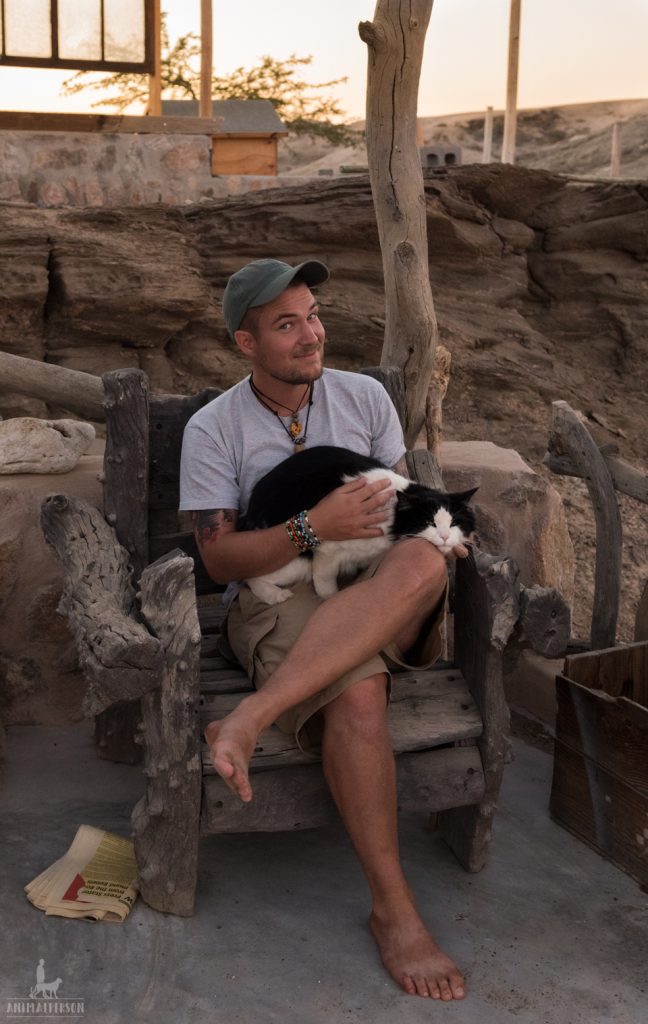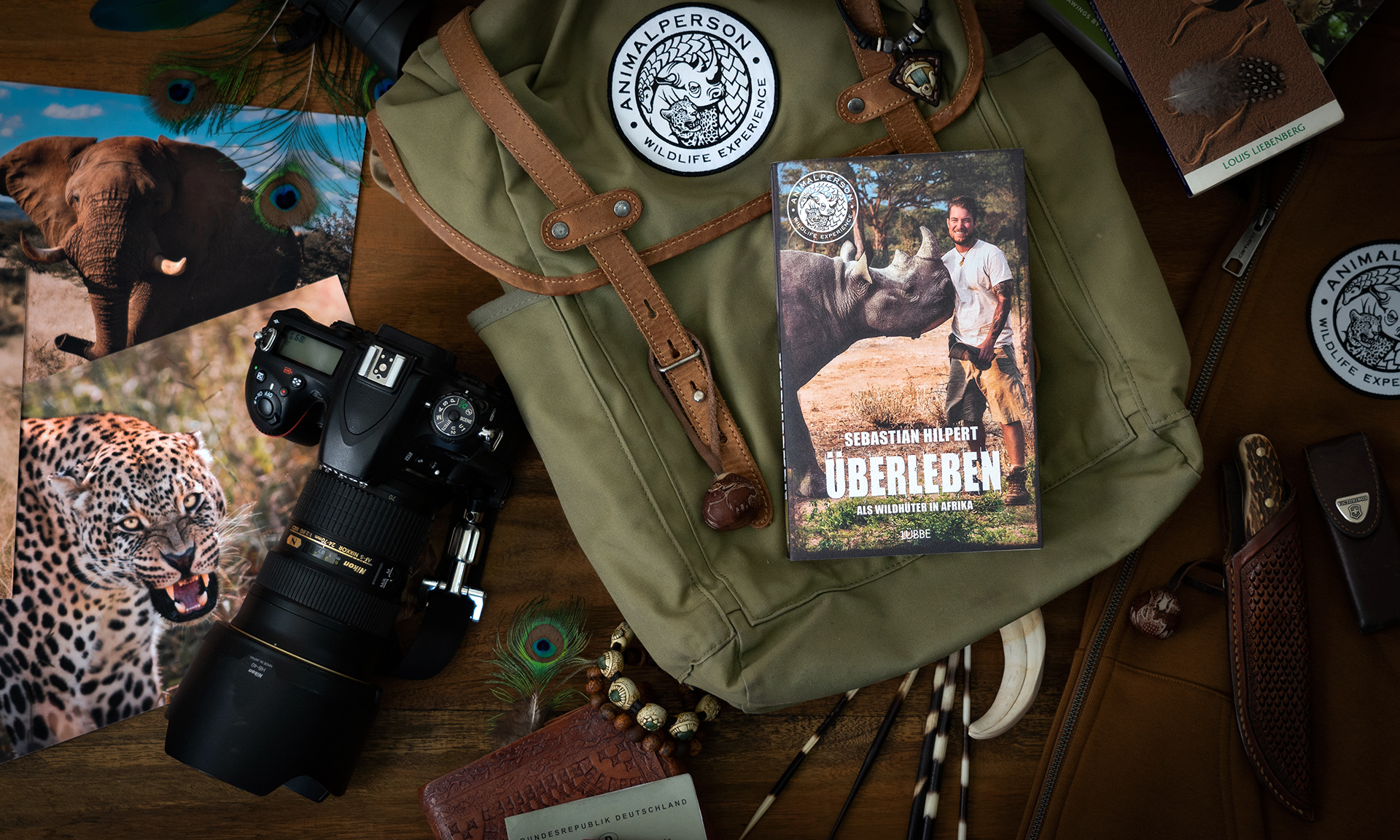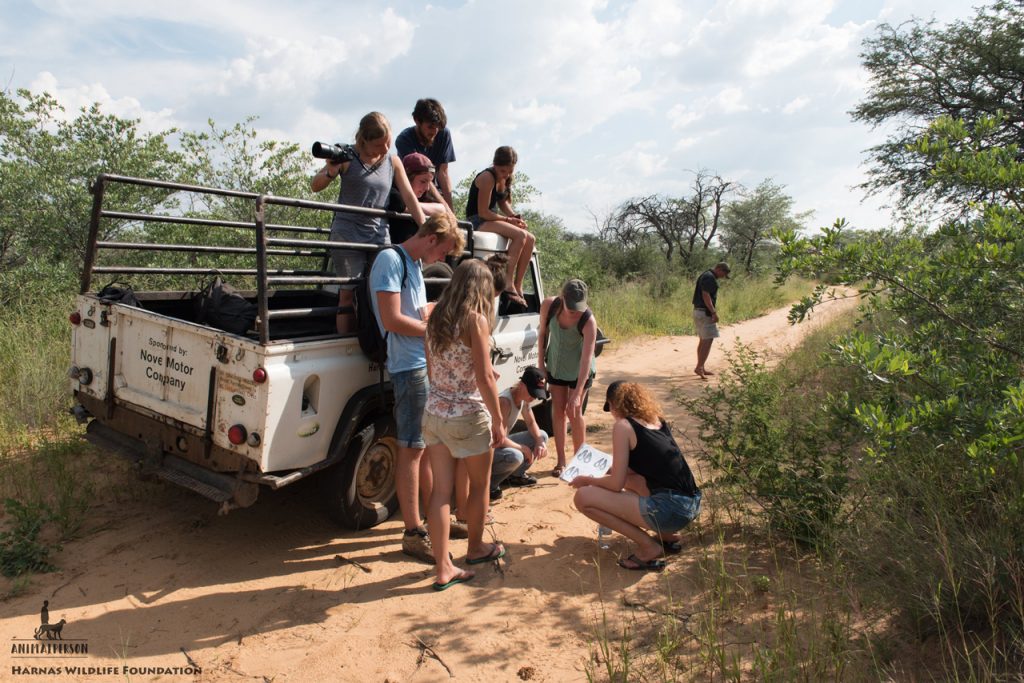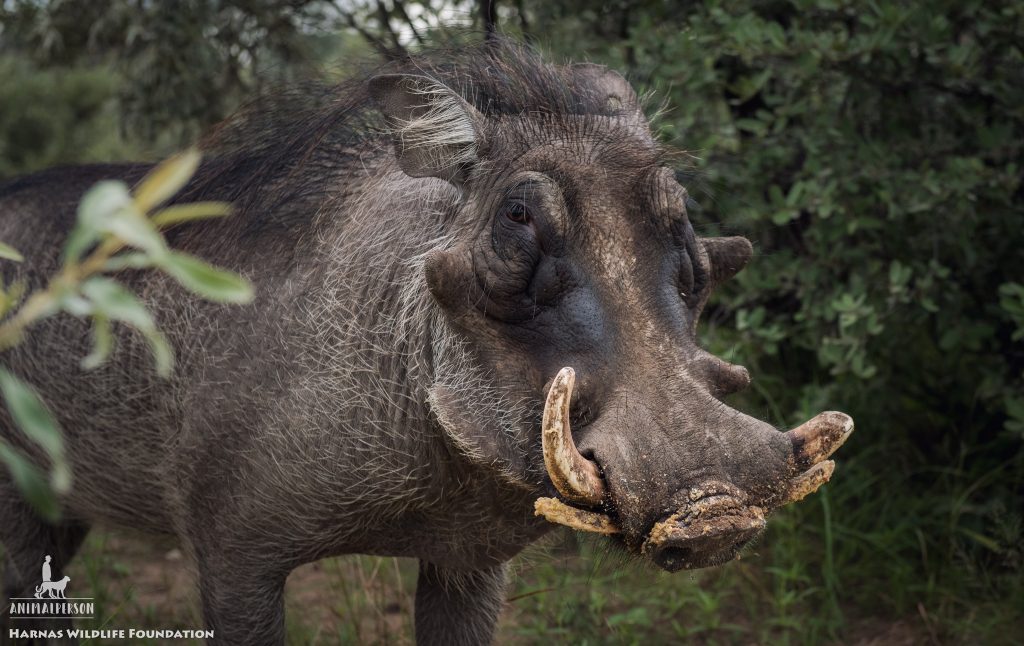
“It’s almost like being in Germany, a place you have to go to!” This is what I was told about the little coastal town with its prominent red and white lighthouse during my first stay in Namibia in spring 2015. Frankly speaking, why should I take a 10-hour flight from Germany to Namibia, add a 5-hour car drive just to visit a place which is supposed to be “just like Germany”? I make my trips to South Africa in order to escape good old Germany, not to visit some kind of German offspring. I could have had this way easier – I could have just stayed where I was. These were my thoughts back in December 2015. Soon after that, I visited this town anyway while I was travelling through Namibia – and I was positively surprised. It was completely different to what I had expected. That’s why I paid the small town of Swakopmund and its 43.000 inhabitants a second visit in April 2017. That’s why I’m writing this blog entry.
Mexican-like flat roofs, broad American-like streets – that’s what you can find right next to the oldest desert on earth which you can see if you’re standing on the right crossing looking south. If you turn your head away from the south to the west, you will see the sparkling and ice-cold Atlantic Ocean. “Just like Germany”? Definitely not! Nevertheless, this is the city where you can still see best the German influences of the colonial times. That isn’t bad at all, because that makes it kind of a special place. It’s the most favored holiday destination in Namibia, even for Namibians.
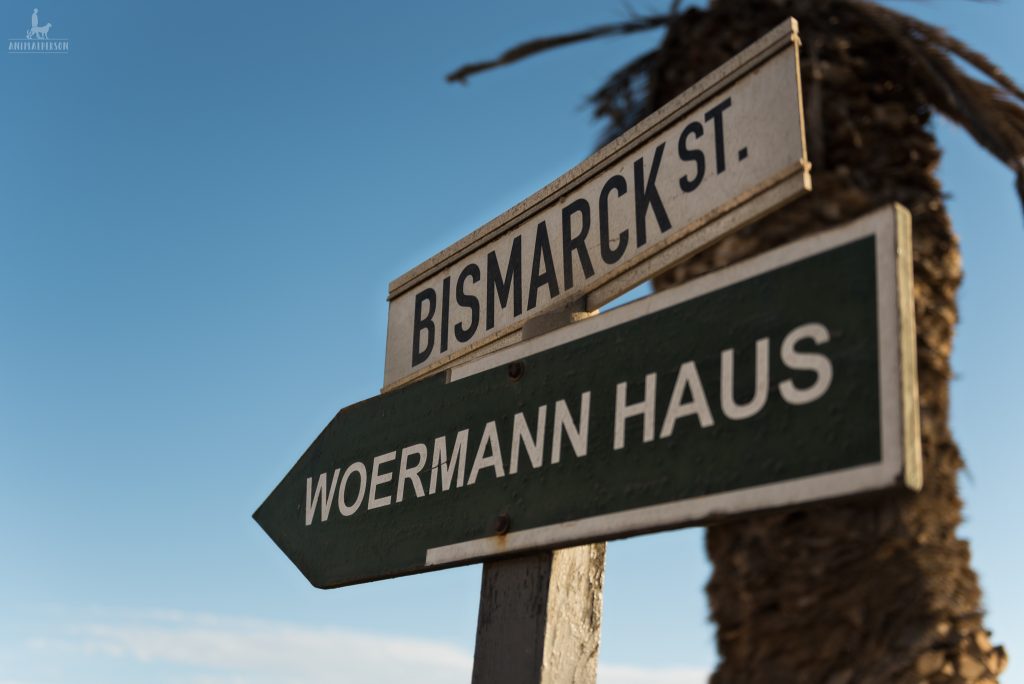
What makes this town one of a kind?
Responsible for that are several factors. First, its remarkable location: the Namibian desert in the south, the Atlantic in the west and the Skeleton coast in the north.
Second, the climatic conditions – you have two days of rain per year. Two days! If you don’t watch out, you might miss one just my oversleeping.

Third, the architecture of the town centre. The German colonial time between 1884 and 1915 left its marks here – wilhelminische pediments and art nouveau fronts can be found. Right here in Africa – that’s incredible! Right across from our accommodation you can find the Protestant Lutheran Church which was was consecrated in 1912. It looks just like being teleported from a Middle German town. Not only the church, but also the old farm from 1901, the “Alte Amtsgericht”, the lighthouse, the Woermann house, the Hohenzoller house or die old barracks – all of them were designed and built following the example set by the German architecture during the “Kaiserzeit”. Those combined with palm trees and the sand on the street – a special and unique flair.
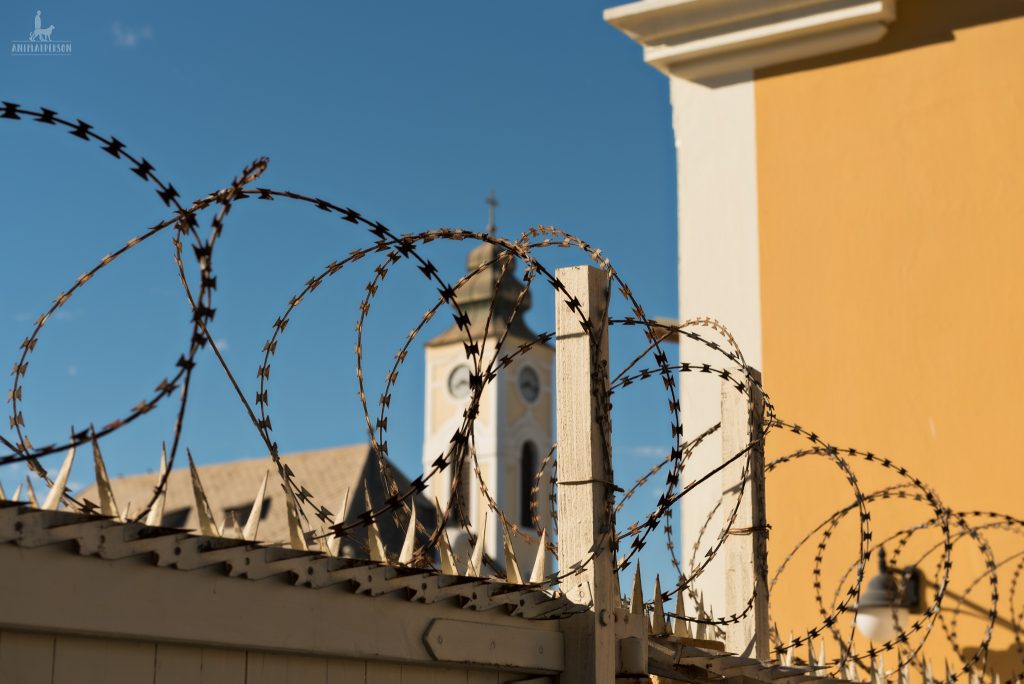
Activitites
“I’m sorry, we’re completely booked out”. “Nothing in the next three days? All travel agencies are booked out?” “Unfortunately yes.”
The “Living Dessert Tour” was recommended to me from all sides, but obviously we had underestimated the demand. “Most people book the tour at home before their trip. Demand is rising, more and more tourists are visiting our country.” That’s what the nice lady at the information told me. She was right with that.
Two years ago fewer than 25% of today’s tourists were crossing our paths. Luckily, Namibia is still far away from getting this mass tourism flair. Still, I have to advise you to book desert tours, hot air balloon trips, skydiving etc. before your trip, otherwise you will share our destiny…
Fortunately, there are a lot of things left to do.
The Damara tower at the anchorage is perfect to become a good view of the city. The tower is 25 meters high and belongs to the “Woermann” house which was built in 1894. It’s one of the oldest buildings in the town. The view from its top is impressive: right behind the roofs of the town you can see the dunes of the Namibian desert reaching for the Atlantic Ocean.
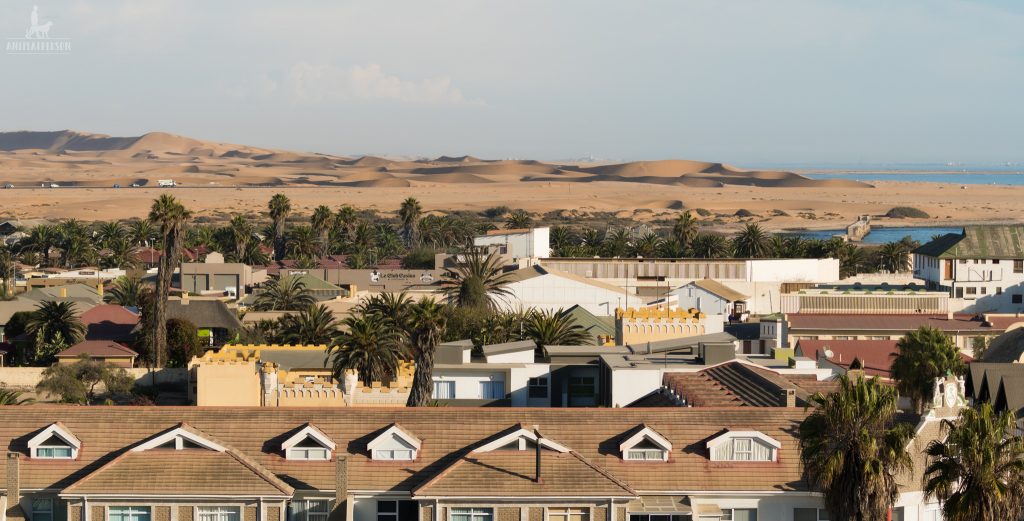
Swakopmund museum is privately run and very interesting, therefore perfect for a relaxed Sunday afternoon walk when all the other shops are closed.
The museum is bigger on the inside than you might think from the outside and offers a big variety of historical and cultural pieces of Namibia.
My little inside tip for those who like to take the unusual and remarkable picture, or wanted to travel the coast northwards anyway:
Take the coastal highway from Swakopmund heading in the direction of Skeleton coast. You’ll have the surf of the sea to the left and wasteland to your right. After about 50km you will see something rising up out of the water which made me shiver when I first saw it. It was December 2015 when I was heading to Damaraland. The coast was foggy and the missing sun made the land look grey and lifeless. Suddenly, a post apocalyptic nightmare of a ship wreck rose right in front of me. Back then I didn’t stop to take a picture. That bothered me and so, I made up for it this year.
We got up in the early hours of the morning to take pictures of the Angolan cutter “Zeila” in the morning light. In the meantime, they had even put up a small sign which tells you about the wreck. Right next to the street, you’ll find an even spot to park your car and gives you the opportunity to walk a few steps to get to the beach. I love photo motifs like that!
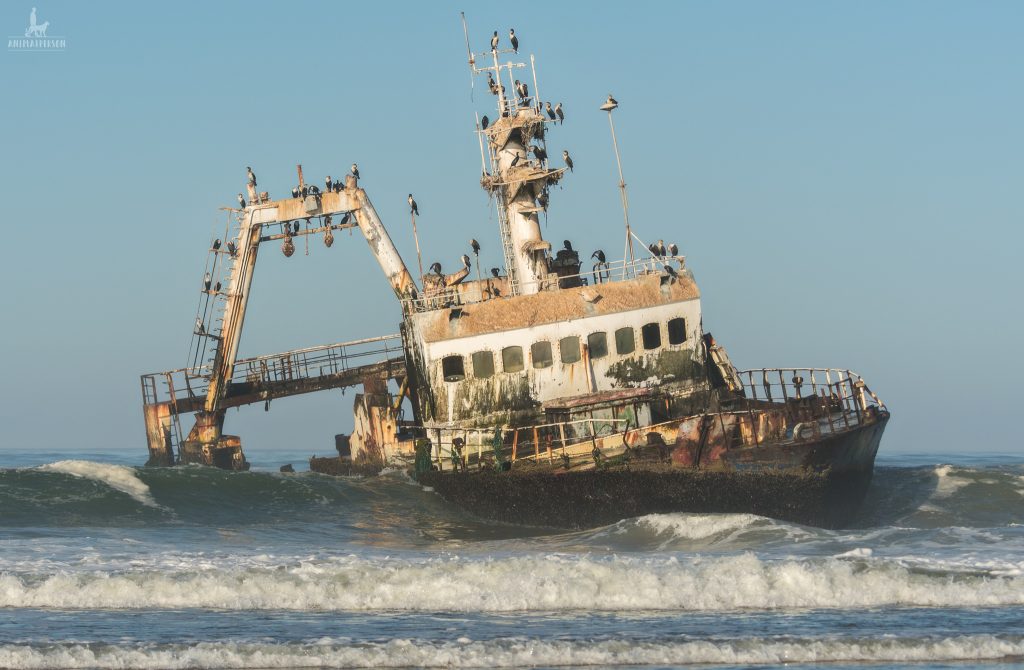
Restaurants & Cafés
Food is important – especially good food. If I’m in a bad mood, give me something good to eat or a well-brewed coffee and my mood lightens up immediately.
Good restaurants are numerous, I will only write about those I visited personally.
Imagine that: I’m standing in the burning African sun, 32° degrees Celsius, smelling the salty sea air and read this:”Hopfen und Malz, Gott erhalts”. (God shall protect our hop and malt)
It’s the “Swakopmund Brauhaus” (brewery) with a ceiling decorated with flags from all over the world, but especially those from Germany. Next to the flags of Finland and Wales, you will find those of Bremen, Hamburg, Saxony, Bavaria, and even those from Franconia and Lower Franconia.
The best way to strike up a conversation with locals is to take a seat at the bar. The food are typical German dishes which are accompanied by beer which is mainly brewed after the German “Reinheitsgebot” (beer purity law). Although the whine menu is huge, it seems not to be of a big interest for the South African tourists. That is, right after the German tourists, the second largest group of tourists in Namibia. The South African tourists seem to love the large, boot-shaped beer glasses which contain up to two liters of beer. This is according to their guidebook a typical German way to drink beer. I’m sorry guys, we only have the “Maßbier” which contains “only” one liter – otherwise the beer would become stale before you could drink it up…
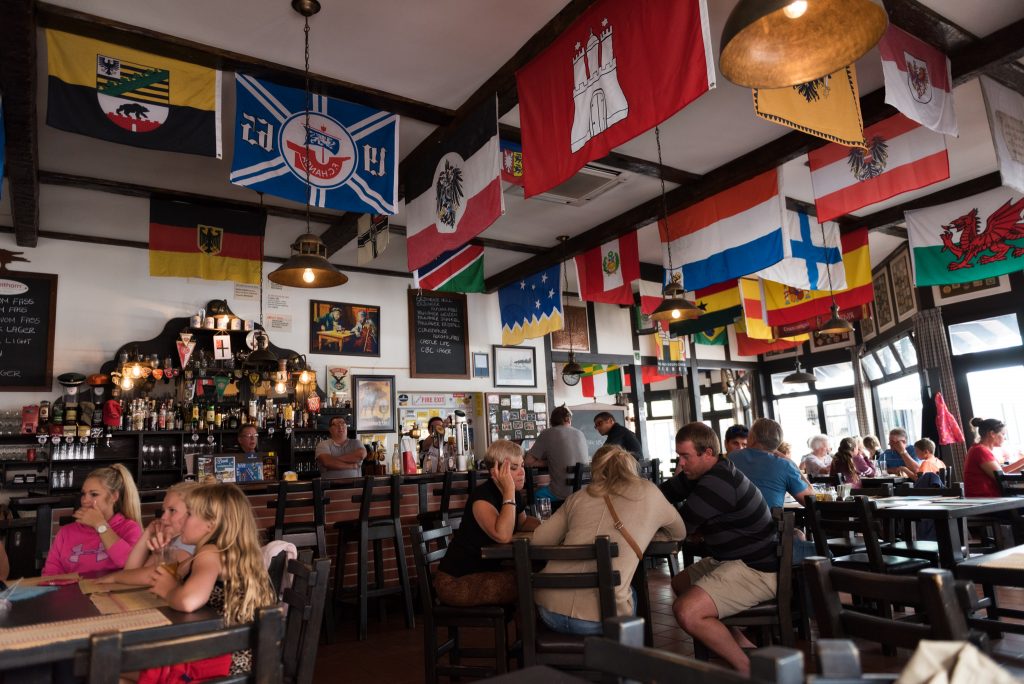
Sushi in Namibia? Why not? I even think it was the best Sushi I’ve ever had. The “Ocean Cellar” belongs to a hotel, but that didn’t bother me at all. Fish, sea food and the Sushi – it was excellent. Besides that, sitting on the terrace, you have an great view over the little beach where brave ones of every age jump into the sea – which has only about 18 to 20° degress Celsius.

Coffee, Coffee, Coffee
I like good coffee. No instant or filter coffee, only the real good stuff from Italian coffee machines, for example.
Who wants something bizarre visits “Café Anton”. The café can be found in the “Schweizer Haus” (Swiss house) which has a beautiful terrace with a view overlooking the lighthouse. Bizarre is the style of it: it’s completely decorated in the style of the German 1970s. Furthermore, you can order a “Schwarzwälderkirschtorte” (Black Forest gâteau) or a ”Frankfurter Kranz“ (ring-shaped, layered cake with cream filling) to your coffee. For someone like me, for whom Namibia is bush and wilderness, this appears to be quite confusing. That’s Swakopmund.
Colorful, typical African, full of the joys of life and marvelous uncomplicated, and with it huge breakfast sandwiches, that’s what the “Village Café” stands for. The colorful inner courtyard with its old VW Bulli is a great place to veg out. A must-visit place.
The smell of freshly roasted and grinded coffee comes from the “Slowtown”. You could find this café in a hotspot in Hamburg, Vienna or Berlin with its new and modern interior. It’s comfy and bright, with home brewed and grinded coffee which is joined by incredible cakes (I only know one café in Germany which makes better ones). Again, you can see the lighthouse from the terrace. I really love this place. From all the cafes we visited, this one’s my favorite one.
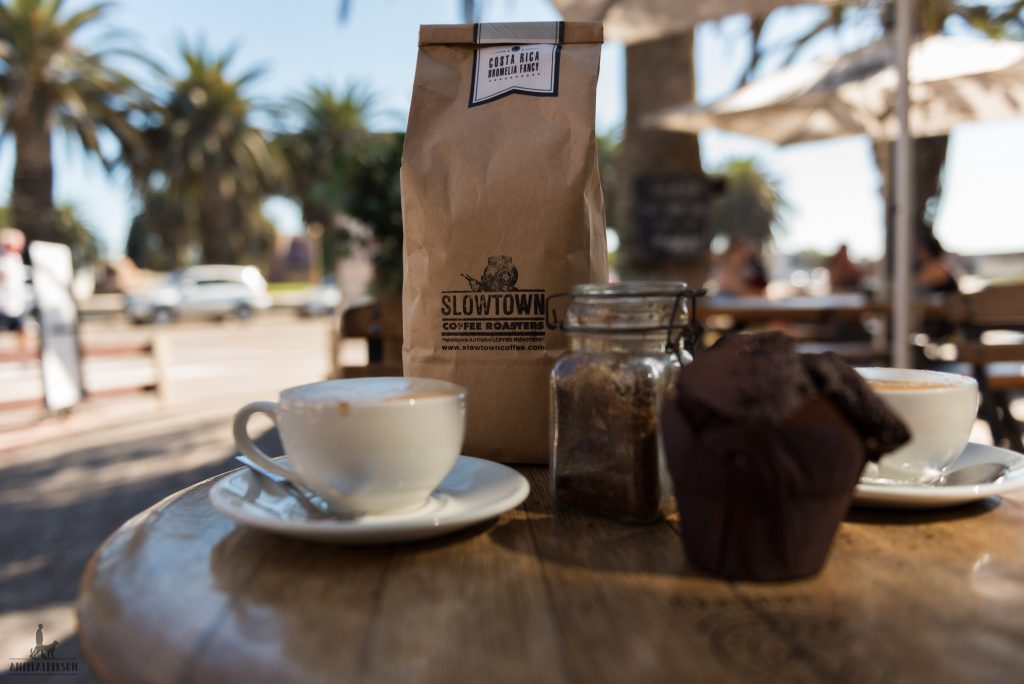
And what else – why Swakopmund again?
What makes a place a spot you want to visit again? The huge numbers of shops? All the shops with safari equipment, books (among others the oldest one of Namibia from 1910) and souvenirs? The achitectural design? The unique location? What is it?
For me, a special place is a spot where people live I want to meet again. For Swakopmund, this is an artist we’ver met in 2015. He’s a builder and a creative jewelry artist. He surfs the Atlantic waves for over 30 years and lives on a farm in the desert. His name is Karsten and he owns a little jewelry shop calles “Smallworld” at the Ankerplatz.
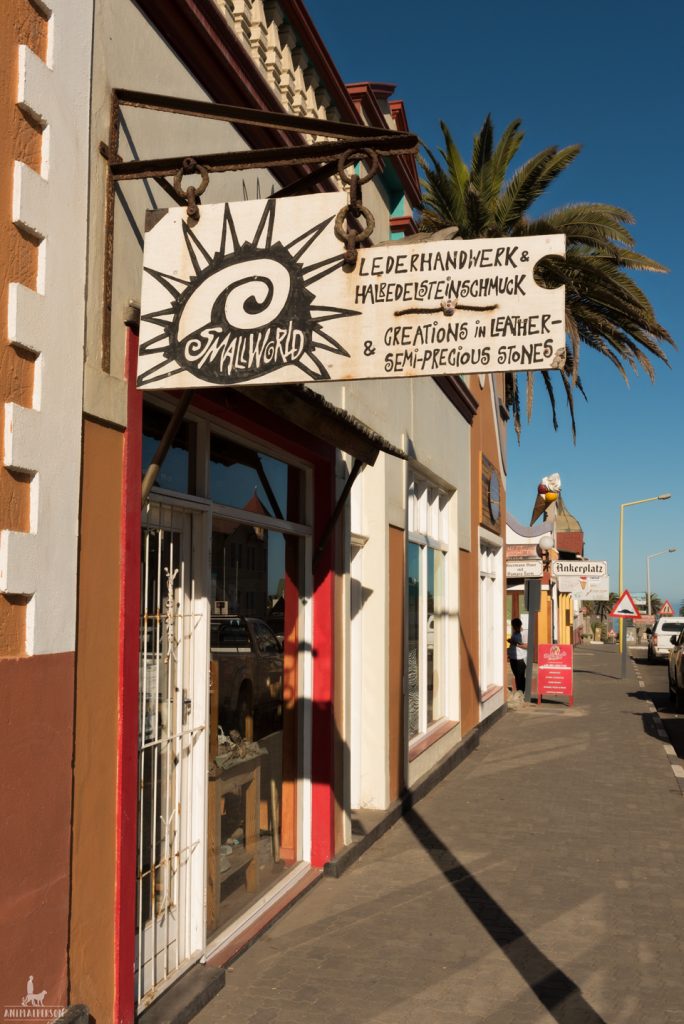
That’s where he sells lavishly designed necklaces, bracelets and more little works of art. The material he uses are semi-precious stones which come, for example, from the Namibian desert or from the Brandberg massif. Every piece is an unicum and I’m overwhelmed by his work. I’m already wearing three of his bracelets and I would have more, if I could afford it…
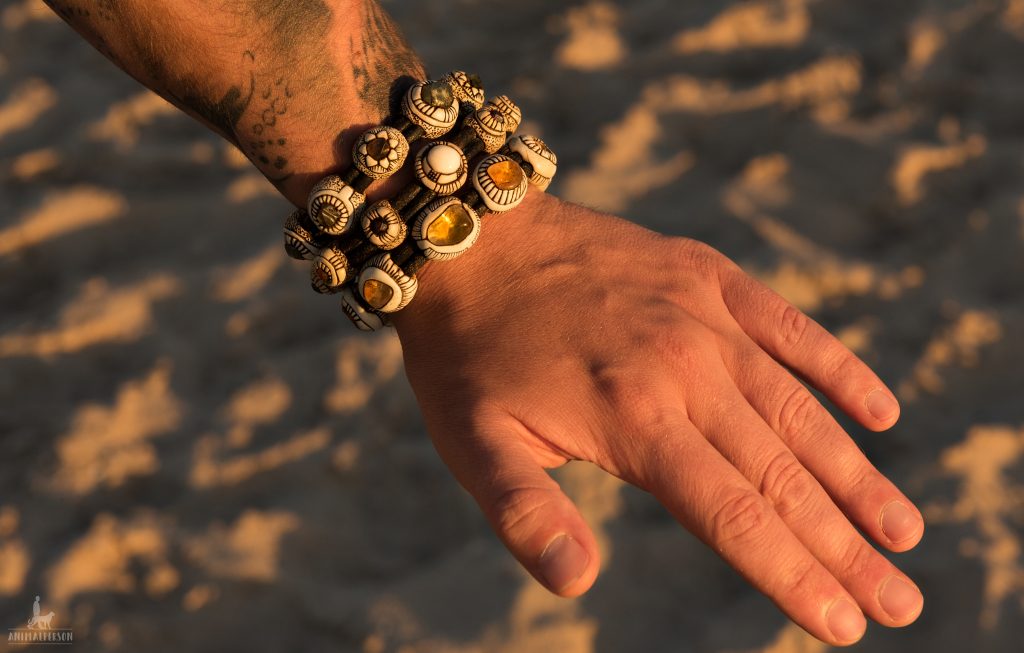
We had the honor of being invited several times to his place. Outside Swakopmund he has his little creative paradise right in the middle of nowhere. A farm with flat roofs and terraces, designed with all his heart and incomparable to anything I’ve seen before. It’s a pleasure just sitting there, enjoying a good cup of coffee or having a barbecue while experiencing the sunset. The last light if the day paints the desert in a honey color while it becomes more red with every minute, and the shadows grow longer and darker.

Two years ago, several skater pros from Germany, the US and Canada stayed there with us. Why? Because Karsten had built a halfpipe for his sun right between some rocks. A halfpipe in the African desert – something you must have seen, especially as a pro.
Karsten has some plans for his farm. He wants to add some crash pads and a café in the next two years. I really hope, he follows his plan. I couldn’t imagine any place better for my future stays.
